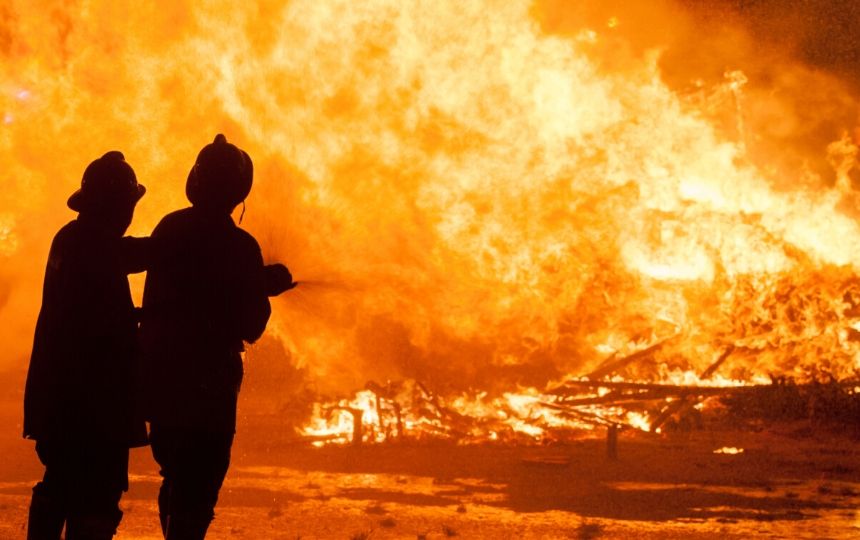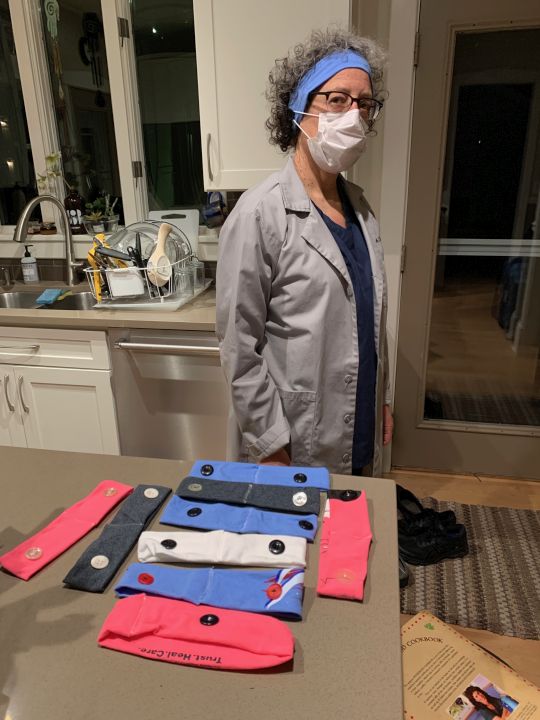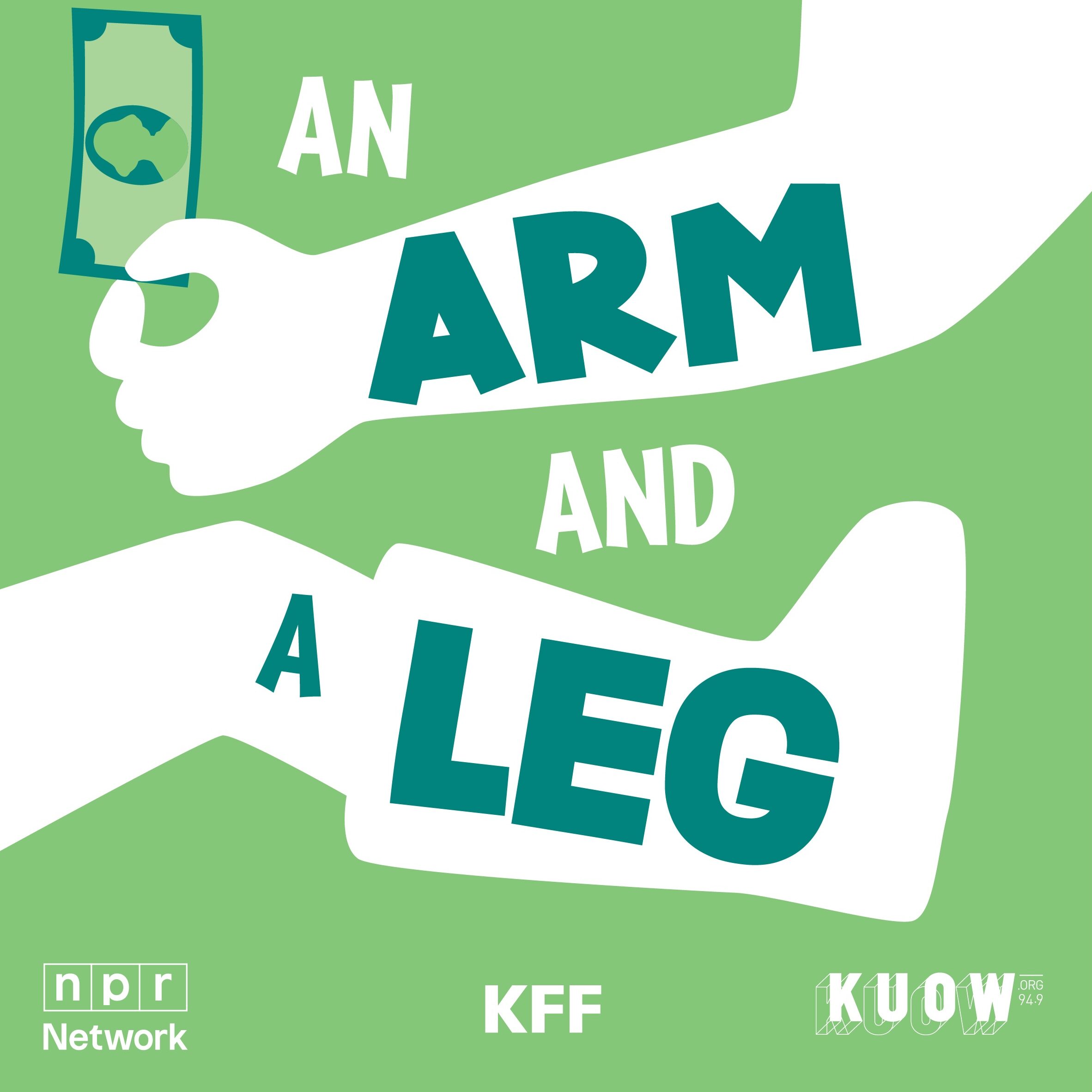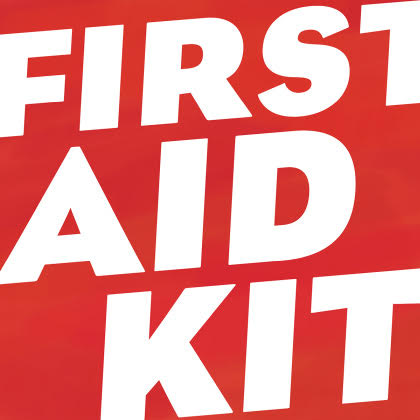Please note that this transcript may include errors.
Dan: Are you ready?: Set.
Danny: Set. Oh wait, mom, your video is all frozen. Okay. Yeah, yeah. Ready, set, go. Here we go.
Dan: This is how we end the days at our place. A few rounds of Boggle with my mom. She’s on zoom, of course, sometimes my son joins in.
He’s 11 tonight though. It’s like every round stinks. There’s like no words. I mean, there’s a few, but go. Oh my gosh, this one looks terrible.
H: there’s like no sounds of pencils scratching away here.
Dan: Can we just like, okay, I see one word.
I found one word. I found one word.
H: Yeah, same. Okay. I found one.
Dan: Well, maybe I’ll see another one. And I mean, we are really good at Bogle. I mean, we actually give up on this round, but every time it’s like,okay, go. This one’s gonna be great. I can tell.
Maybe, maybe not.
Mom: Terrible.
Dan: This one sucks too.
Wow.
H:A lot of them suck.
Dan: This is the worst. But I mean, who am I kidding? The worst. This is the best. If we live like a mile and a half from my mom and we haven’t gotten to see her in person for, you know, weeks and weeks, but we see her every night, it is absolutely the best.
See you tomorrow. Love you.
Mom: Bye bye.
Dan: This is an arm and a leg, a show about the cost of healthcare. I’m Dan Weisman. And protecting our mental health, our emotional health. That stuff is important too. So one question is, how are you getting through this? What are you doing to nurture yourself, your relationships? One thing I am doing, I am limiting my intake of things like social media, and I’m reading your notes and stories just before our last episode went out.
I got a note from a listener named Trina who’s a nurse. She works in an ER in a hospital outside of Dallas, and she says we are currently geared up with a tent and already for the surge it does sound like they could use more N95 masks. They’re limited to one per day, and she writes, I wanna let you know a couple of small things that make a special difference.
Trina’s neighbor has been putting a table out on her curb and posting online to encourage people to make donations, including for Trina and her colleagues. We got things like goggles, work gloves, dish soap, just a little to help out when we can’t get to the store. Trina says she’s also gotten connected with someone who is 3D printing something called ear savers.
She writes, you might not know. Having elastic straps around your ears all day can rub them raw. This is a connector piece in the back that keeps them from touching that area. Genius. Please keep these stories coming, ways you’re finding to help out, ways you are being helped, ways you see others helping.
We need it. I get other stories too, of course, and they’re not all Sunshine. A couple weeks ago, someone tagged the show and retweeted part of a thread from a Ryan Galin md. It turns out, before going to med school, Ryan spent about 10 years on the business side of healthcare working with insurance companies, and in the thread, he had a story that tied together what he saw in his business days with what he’s seeing now.
Here’s how Ryan’s thread starts. This is him reading.
Ryan: If you ever retweet something of mine, please make it from this thread.
Dan: The first few tweets say how he’d seen from the inside, how much the profit motive has taken over healthcare insurance for profit hospitals, investment companies buying up physician groups.
Ryan: If healthcare dollars were water, we’d willingly be sending it through a Byzantine aqueduct that has high evaporation and moves water uphill.
Dan: Yeah, that’s a good metaphor. And then he tells this story. Ryan’s an anesthesiology resident and during one of the big California wildfires last year, saddle Ridge, he was working in a county hospital right in the fire’s path.
Ryan: I was urgently making my way through police and fire court and checkpoints with my hospital badge to get to the hospital building, and I could see the wall of flame. Driving in and I could see the wall of flame from the anesthesiology office, but still I was not afraid. Right? I said they’ll never let the hospital burn.
But hours later, an announcement came overhead. It said the fire hydrants had run dry. The hospital was shelter in place, and I was scared.
But do you know what happened? Over the next hour, fire trucks poured in and surrounded the hospital. City, county Park Service, forest Service BLM. New trucks, old trucks, unmarked trucks. They arrived to protect the hospital quickly and so effectively. As I drove home later that day, through the protective ring of equipment, I realized a fundamental difference between public safety and healthcare.
Public safety is built on latent. Capacity we pay for people and equipment to stand idle over prepared for emergencies.
Dan: In contrast, he says healthcare has produced its profits by getting more and more efficiency from frontline workers,
Ryan: harder work, more patients to care for more paperwork, more complexity.
We’ve left no latent capacity in healthcare. Everyone was working at their maximum
Dan: Was that is was already for COVID-19.
Ryan: And some part of the tragedy that’s now unfolding in this country is because of that, because we let healthcare become a business and because businesses don’t keep a hundred extra firetrucks around, they’re crews trained and ready, just in case.
This latent capacity is the role of a functioning societal safety net, and we sold ours to the highest bidder.
Dan: I got to talk with Ryan last week. We’ll have a little of that conversation right after this.
This season of an Arm and a leg is a co-production with Kaiser Health News. Kaiser Health News is an independent newsroom reporting on healthcare in America, and it is not affiliated with the giant healthcare provider, Kaiser Permanente.
There’s a little more detail on that at the end of the show. Here’s a bit of my conversation with Ryan. He’s doing his residency at a hospital in LA and they say to make sure we note he is not speaking for them, just for himself.
Okay,
check. When I talked with him last week, he had just come off a 24 hour on call shift.
He said it was scary. He told me about a conversation he’d had with a senior colleague the night before.
Ryan: You know, he’s had a long career, this guy, and he is very good at what he does, and he said. I never thought I was gonna leave work, wondering if going to work that day. Caused me to die.
Dan: So Ryan and this colleague are anesthesiologists, right?
And it turns out in lots of hospitals, anesthesiologists are among the folks with the most practice doing something that is during a pandemic. That means lots of folks need to get put on ventilators. Suddenly a crucial everyday and dangerous procedure sticking tubes down people’s airways. ’cause it turns out
Ryan: the single best way to generate a huge plume of active virus, uh, as best as we understand it is to, is to intubate someone.
Dan: Ryan knows that being in Los Angeles means he’s not as exposed as healthcare workers in places where there’s lots more cases like New York and still it’s scary. It’s been scary. He was scared when he sat down and wrote those tweets.
Ryan: It felt like a fire with nobody to call. Right. And I kept looking every day at what was going on and talking to colleagues in New York and Boston and realizing the proverbial fire department just wasn’t coming.
Yeah, and I was sick of feeling that way.
Dan: Ryan doesn’t like it when people call healthcare workers heroes. This is not the kind of heroism that people he knows signed up for. The work is hard enough. Do people also have to put their lives at risk to do it? ’cause they can’t get protective equipment? Ryan knows how much money there is in healthcare.
He has been on that side of the business, and he knows we’ve got the money to do this better. We are spending that money on healthcare, trillions of dollars a year. You know, a few weeks ago we were talking around here about what stories we should do this year, me and my colleagues, Anne Heman, Daisy Rosario, and we had a lineup of stories for season four for this summer, all about self-defense against awful medical bills.
And we had a few hot ideas for season five stories for the fall stories that would look at where did all that money go? Those trillions of dollars. Whose pockets do those dollars end up in? And on the agenda for that conversation in between the season four part and the season five part was this heading Coronavirus, we should talk about this.
And under that it was like, uh, it could totally preempt season four along with everything else in the world. And the funny thing of course was that had already happened, like that actual day. My son came home with three weeks worth of homework in his backpack and I went out that afternoon to top off our household supply of pasta and lentils and stuff.
But I’m starting to think. We should really look at those season five stories, those dives into where the money ends up. Like that is a thing.
I don’t know how long this COVID-19 season’s gonna last. We could be doing this every week for a while. There’s a lot going on. But the idea with those season five stories was that we would take our time working on them. And Ryan’s story leaves me thinking, yeah, we should look at picking up that thread.
Ryan’s got his eye on it. He says he was just looking at an earnings report for a company he used to work with. That one company made more than a billion dollars in profit in three months.
Ryan: The system is perfectly designed to get the results that it does. You know, I could tell you precisely how many times I sat in a meeting and heard the question, you know, what will this do for patients?
And the answer is zero. Zero times.
Dan: Ryan made a change in his life. Of course, he dropped out of that world, went to med school, and I asked him how he thinks this experience, this pandemic might change his work, his perspective. He answered as a doctor.
Ryan: It’s funny. I can recall vividly. During medical school on an exam, being asked a question about, um, chemical weapons, right?
And very specific, I mean, super down in the weeds, sciencey stuff about the way chemical weapons acted on a cellular level. And I sat there and I thought, man, is there nothing better this professor had to ask me about than chemical weapons? I gotta tell you, I think about that exam question all the time now.
Dan: Ryan says at the time he thought chemical weapons were something he would never encounter as a doctor, and now he imagines the professor who wrote that question had been in a situation, maybe a war in the Middle East where chemical weapons were actually in play. Where being a good doctor meant you had to know how chemical weapons work ’cause you might very well have to try and save somebody who’d been exposed.
And Ryan thinks about how, what he’s learning now on the job, disaster medicine, highly communicable diseases. It might have seemed obscure and dull when he was in med school, and how from now on he’s gonna think of them as basic essentials in any doctor’s toolkit, Ryan says he also thinks about more day-to-day lessons.
You know, I have kids and
Ryan: what do I find myself teaching them more often than not is like, you’re gonna fail. You’re gonna fail a lot. The goal is to get a little bit better every day. And then, uh, you know, half the time you’re going to bed and you’re thinking, man, I’m giving out some pretty solid advice that I should probably also be taking, like, you know.
Yeah.
Dan: Are you gonna go get some sleep now?
Ryan: I’m gonna go shoot squirt guns at my kids for a little while and then take a nap with them.
Dan: That sounds good. That sounds great. That sounds great. Uh, enjoy and rest. Well, excellent.
Ryan: Thanks so much.
Dan: Thanks. Take care.
Bye. And these are good lessons for all of us.
Get your rest, enjoy your family, your community, any way you can, and the goal is to get a little better one day at a time. And let’s look for some of that latent capacity. People are doing it all over, finding it wherever they can. Remember at the start of this episode, I talked about the nurse I heard from who was getting ear sas, these things that keep the elastic band on a mask from rubbing away the skin behind your ears.
She was getting ’em from a guy with a 3D printer. Well. You don’t need a 3D printer. The other day I was out for a walk and saw my friend and neighbor Liz on the street, and we talked a little from at least six feet away. Liz is a doctor, she’s the medical director at a community clinic, and she showed me these super low tech ear saves she had with her that an old colleague of hers is making.
They are fabric headbands with buttons sewed in to hold onto that elastic. And they’re made out of old t-shirts and the buttons are scavenged. Liz ended up sending me a voice memo about them. She had sent out an email to this little Jewish community. We’re both part of an email that I missed asking for buttons.
Liz: It was really sweet. A bunch of people came back in with, I’ve got 10 buttons, I’ve got two buttons. I’m grateful to all those people. Thanks.
Dan: I mean, wow. You know, maybe you are overwhelmed with kids who suddenly need homeschooling, or maybe you’re figuring out how to pay the rent in this new economy we’ve got going on here.
Or maybe you are a frontline worker yourself, and if that is you, hey, stand down. Get through this for the rest of us, if we can take a breath. Slow down a little. Keep an eye out for emails, requesting buttons. We’re gonna start collecting links at arm and a leg show.com. Liz sent me a picture of those.
Headbands will post that and I’m taking recommendations and we will start bringing you more news about the results. We can bang pots and pans to thank healthcare workers. We can put signs in our windows, all of that. And let’s see what more we can do. We may not be able to totally solve everything on the Boggle board of life.
Sometimes there are not a lot of choices. I have one very appropriate word for this.
H: Oh, I think I know what it’s,
Dan: It was the letters, TURD. You know, you do what you can with what you’ve got. So whether it’s something you’re doing to help, a way you’re being helped, something you’ve seen, please bring it. Arm and a leg show.com/contact.
Or send a voice memo from your phone to stories at arm and a leg show.com or just call 7 2 4 2 7 6 6 5 3 4. That is 7 2 4 Arm n Leg Lang. Till next time, take care of yourself. This season of an arm and a leg is now more than ever supported by you. We are in weekly production for the duration, and so that’s a bigger deal now than it ever was before.
I wanted to say thank you to everybody who has stepped in to help us out. We’ll be calling out names in a minute. You can join in by going to Arm and a Leg show.com/support. First, this episode was produced by me. Dan Weissman and edited by Anne Heman. Daisy Rosario is our consulting managing producer and Adam Raimundo is our audio wizard.
Our music is by Dave Weiner and Blue dot sessions. This season of an Arm and a Leg is a co-production with Kaiser Health News. That’s a non-profit news service about healthcare in America. It’s an editorially independent program of the Kaiser Family Foundation. Kaiser Health News is not affiliated with Kaiser Permanente, the big healthcare provider.
They share an ancestor. This guy Henry j Kaiser, he had his hands in a lot of different stuff. Concrete Aluminum, one of the first big resorts in Hawaii. When he died more than 50 years ago, he left half his money to the foundation that later created Kaiser Health News. You can learn more about him and Kaiser Health News at Arm andal leg show.com/kaiser.
Diane Weber is National Editor for broadcast, and Tonya English is senior Editor for Broadcast Innovation at Kaiser Health News. There. Editorial liaisons to this show. Finally, thank you to some of our new backers on Patreon pledge. Two bucks a month or more. You get a shout out right here. I cannot tell you how much I appreciate you making it possible for me and my colleagues to do this show.
Thanks this week to Sarah Lawrence, Scott Backer, Jennifer Brown, Simon Marcus, Rowan Patton, Juan Tous, and Jackie Carlucci. Thank you.



